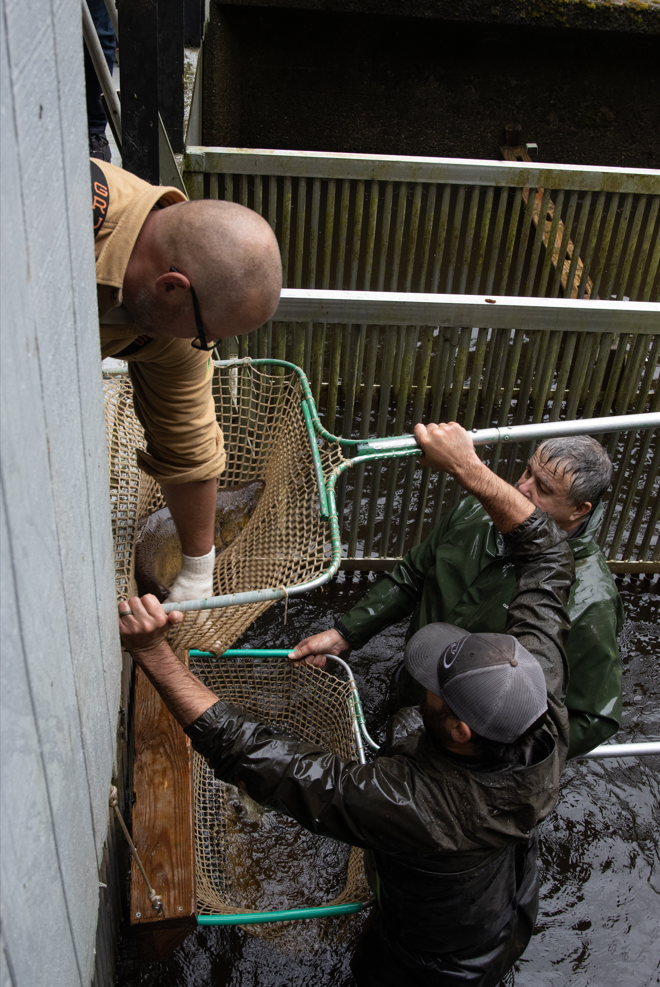
Bandon hits the salmon jackpot in 2022
Nov. 10, 2022
BANDON, Ore. – The mood is festive this fall in the Bandon Hatchery’s cramped spawning room.
“How can you not have a smile on spawning days?” said Helena Linnell, biological operations and planning manager for the Coquille Indian Tribe.
That’s especially true in 2022. After years of sparse salmon returns in Bandon’s Ferry Creek, this fall brought more than 150 breeding pairs of hatchery Chinook salmon – the most in at least 20 years.
Spawning is continuing through November, with 2022’s plentiful broodstock yielding hundreds of thousands of fertilized eggs. This bumper crop of new salmon brings fresh hope for the Coquille River’s imperiled Chinook population.
“We’re really blessed with the number of fish that came back this year,” said tribal Chair Brenda Meade. “The hard work and dedication of so many people is what brought us successes this year.”
A coalition of the Oregon Department of Fish and Wildlife, the Coquille Tribe and community volunteers collected about 300 adult salmon in Ferry Creek over the past several weeks. Some of the fish were caught in a fish trap, others were netted in the creek, and some made their way to the hatchery on their own.
“People have really stepped up,” Meade said. “We’re getting so many volunteers from the community.”
The number of collected salmon far exceeds ODFW’s goal of 75 breeding pairs. It’s even more impressive in comparison with recent years. Only three pairs were spawned at the Bandon Hatchery in 2020. The number rose to 24 last year – an eightfold improvement, but far too few to sustain the Coquille River fishery.
After learning of the salmon’s plight in mid-2021, the Coquille Tribal Council declared an emergency. Municipal governments, local ports and community volunteers stepped up to help ODFW and the tribe combat predators, gather broodstock, and enhance salmon habitat.
This year’s breeding bounty reflects both natural and human factors. Along with better ocean conditions in 2022, Ferry Creek has new and better broodstock harvesting equipment, thanks to the tribe, the Port of Bandon and volunteers from the Coquille Salmon and Trout Enhancement Program (STEP).
The fertilized eggs will be kept in incubation tanks for several weeks before being moved to Cole Rivers Hatchery in Trail, Ore. There the juvenile salmon will hatch and mature until they are large enough to be acclimated into the Coquille River system.
Improved hatchery production is just one part of the story. In a separate project, two wild fall Chinook females recently were spawned at the hatchery, producing about 3,400 eggs each.
Spawning these wild salmon at the hatchery launches a groundbreaking “conservation hatchery” program on the Coquille River. The new program will collect adult salmon from the naturally spawning population, protecting them from predators until they can be spawned.
Those wild salmon will be kept separate from the regular hatchery population, and their offspring will be released with unclipped fins in the Coquille River basin’s upper reaches. (Clipped adipose fins indicate a hatchery pedigree.)
The goal is to build a more robust population of “wild” fish that eventually will return to spawn in the upper basin, far removed from their hatchery-bred cousins.
